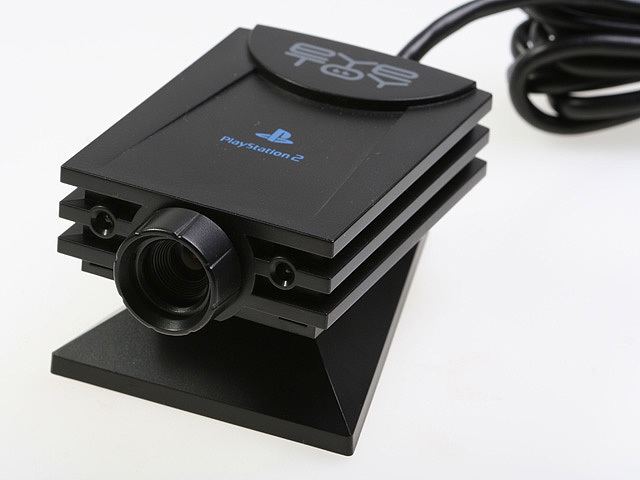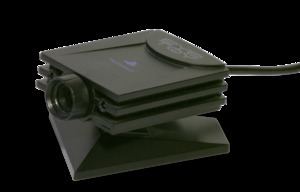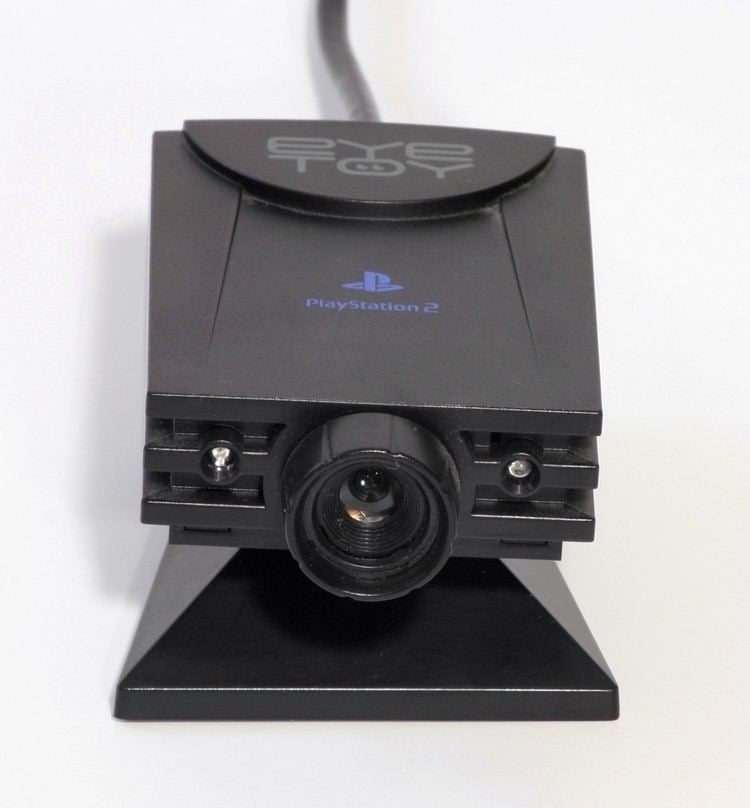Release date October 2003 | ||
 | ||
Developer Sony Computer Entertainment | ||
Cgrundertow eyetoy play 2 for playstation 2 video game review
The EyeToy is a color digital camera device, similar to a webcam, for the PlayStation 2. The technology uses computer vision and gesture recognition to process images taken by the camera. This allows players to interact with games using motion, color detection and also sound, through its built-in microphone. It was released in October 2003.
Contents
- Cgrundertow eyetoy play 2 for playstation 2 video game review
- How to use ps2 eyetoy on windows 7 64 bit
- History
- Design
- Use with personal computers
- Designed for EyeToy
- Enhanced with EyeToy
- Cameo
- References

The camera is manufactured by Logitech (known as "Logicool" in Japan), although newer EyeToys are manufactured by Namtai. The camera is mainly used for playing EyeToy games developed by Sony and other companies. It is not intended for use as a normal PC camera, although some people have developed unofficial drivers for it. The EyeToy is compatible with the PlayStation 3 and can be used for purposes such as video chatting. As of November 6, 2008, the EyeToy has sold 10.5 million units worldwide.

How to use ps2 eyetoy on windows 7 64 bit
History

The EyeToy was conceived by Richard Marks in 1999, after witnessing a demonstration of the PlayStation 2 at the 1999 Game Developers Conference in San Jose, California. Marks's idea was to enable natural user interface and mixed reality video game applications using an inexpensive webcam, using the computational power of the PlayStation 2 to implement computer vision and gesture recognition technologies. He joined Sony Computer Entertainment America (SCEA) that year, and worked on the technology as Special Projects Manager for Research and Development.

Marks's work drew the attention of Phil Harrison, then Vice President of Third Party Relations and Research and Development at SCEA. Soon after being promoted to Senior Vice President of Product Development at Sony Computer Entertainment Europe (SCEE) in 2000, Harrison brought Marks to the division's headquarters in London to demonstrate the technology to a number of developers. At the demonstration, Marks was joined with Ron Festejo of SCE Camden Studio (which would later merge to become SCE London Studio) to begin developing a software title using the technology, which would later become EyeToy: Play. Originally called the iToy (short for "interactive toy") by the London branch, the webcam was later renamed to the EyeToy by Harrison. It was first demonstrated to the public at the PlayStation Experience event in August 2002 with four minigames.

Already planned for release in Europe, the EyeToy was picked by SCE's Japanese and American branches after the successful showing at the PlayStation Experience. In 2003, EyeToy was released in a bundle with EyeToy: Play: in Europe on July 4, and North America on November 4. By the end of the year, the EyeToy sold over 2 million units in Europe and 400,000 units in the United States. On February 11, 2004, the EyeToy was released in Japan.
Design

The camera is mounted on a pivot, allowing for positioning. Focusing the camera is performed by rotating a ring around the lens. It comes with two LED lights on the front. A blue light turns on when the PS2 is on, indicating that it is ready to be used, while the red light flashes when there is insufficient light in the room. There is also a microphone built in. A second, newer model of the EyeToy provides similar features, but sports a smaller size and silver casing.
Use with personal computers
Since the EyeToy is essentially a webcam inside a casing designed to match the PlayStation 2 and it uses a USB 1.1 protocol and USB plug, it is possible to make it work on other systems relatively easily. Drivers have been created to make it work with many computer operating systems, however, Linux is the only OS which has drivers installed yet no official drivers have been offered by Namtai, Logitech or Sony for Microsoft Windows, Mac OS or Linux. The type of driver required depends on the model of EyeToy camera. There are three different models:
The model information is included in a label on the bottom of the camera.
In these custom drivers, the red LED that normally signals inadequate lighting is used as the active recording indicator. The blue LED is lit when the EyeToy is plugged into the computer.
Designed for EyeToy
These games require the EyeToy to be played. All produced by Sony unless noted.
Enhanced with EyeToy
These games may be used with the EyeToy optionally. They typically have an "Enhanced with EyeToy" or "EyeToy Enhanced" label on the box.
Cameo
EyeToy: Cameo is a system for allowing players to include their own images as avatars in other games. Games that support the feature include a head scanning program that can be used to generate a 3D model of the player's head. Once stored on a memory card, this file is then available in games that support the Cameo feature. EyeToy: Cameo licenses the head creation technology Digimask.
